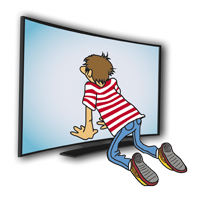Author: Ángel Hernando Gómez – Translation: Erika-Lucia Gonzalez-Carrion
All research begins with an idea that aims to answer a problem or research question. Ideally, all research should be exposed, at the end of it, in the publication of an article in a scientific journal that shows the research work carried out. Between these two moments there are a series of steps, which constitute a process in itself, in which a series of elements must be taken into account.
 Firstly, once the problem has been detected or the question has been asked, it will be necessary to establish the “state of the art” within the knowledge accumulated in this area, that is, to place the work in the state of the art of knowledge in the subject of the article. For this, it is necessary to develop a good argumentative capacity, to rely on primary sources, to use a scientific writing and adequate style and to take into account the connection with current events and significance. Getting to know what has been done before our research will help us in at least three aspects: – not researching a topic that has already been thoroughly investigated, more easily structuring our research idea and selecting the main perspective from which to approach it. We will finish this section with the formulation of our objectives and / or research hypotheses.
Firstly, once the problem has been detected or the question has been asked, it will be necessary to establish the “state of the art” within the knowledge accumulated in this area, that is, to place the work in the state of the art of knowledge in the subject of the article. For this, it is necessary to develop a good argumentative capacity, to rely on primary sources, to use a scientific writing and adequate style and to take into account the connection with current events and significance. Getting to know what has been done before our research will help us in at least three aspects: – not researching a topic that has already been thoroughly investigated, more easily structuring our research idea and selecting the main perspective from which to approach it. We will finish this section with the formulation of our objectives and / or research hypotheses.
Next, it will be necessary to carry out the field work of the investigation where we will have to take great care of everything related to the methodology to be used and that later, in the scientific article, we will reflect in the Method section that will have to consider three subsections: a) Sample (participants, subjects, etc.), number of people or research “entities” and their selection procedure b) Instruments (material used), it must be taken into account that there must be a logical correspondence between the objectives and / or hypotheses raised and the methods, techniques and instruments designed to analyze the data, c) Procedure, where the sequence of actions that have been carried out must be described in detail, that is, how the instruments have been used on the selected sample.
At the end of the previous step, we will find a new section, Results, in which we will answer the question, what was found? In this part we will make a presentation of the results obtained, showing these without opinions or interpretations, in the most objective possible way.
Finally, we will move on to the Discussion section, where the question will be answered: what is the meaning of what I found? That is, we will make an interpretation of the results and their implications by comparing the results we have obtained with the previous ones that we have found on the same topic (which we exposed in the introductory section when we carried out the establishment of the state of the art), so we place the results of our research among the current ideas about what was investigated (which will have already been identified in the theoretical framework). In this section it is necessary to clearly establish what are refutations, what are complements or updates and what are the news on the subject studied.
Finally, we find the Conclusions section where we will recapitulate the most important findings, that we have found with our work, for the future of research in this thematic field, that is, a clear exposition on the novelties that our research contributes (contribution of researchers). This section will end with Limitations and new research proposals, where the aim is to expose the pending research agenda in light of what has been investigated (or not investigated).
